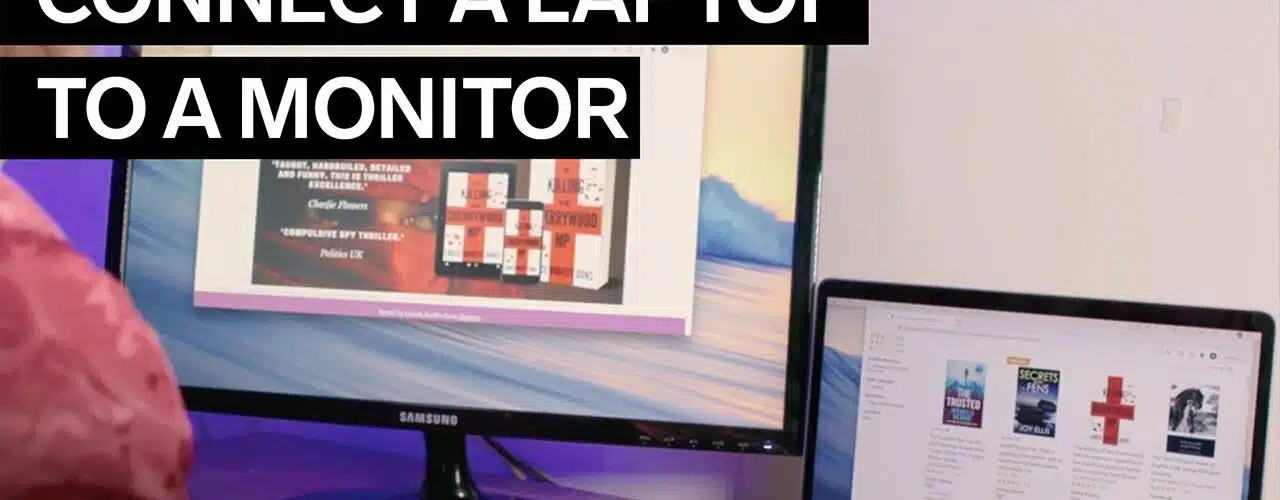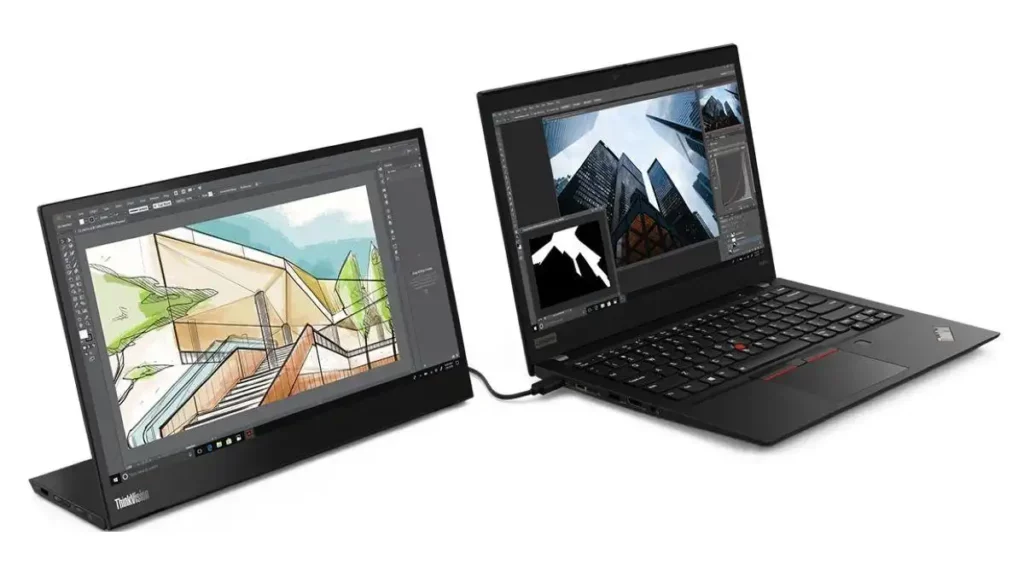Table of Contents
How Do I Connect My Laptop To A Monitor?
Can I Connect My Laptop To A Monitor? Connecting a monitor to your laptop can make it much easier and more efficient to work. It’s a relatively simple process and one that can greatly improve your productivity.
First, determine what kind of ports your laptop has, including HDMI, USB-C (with Thunderbolt 3 or DisplayPort), DVI, VGA, or other connectors.
1. HDMI:
HDMI is a popular cable connection that transmits digital audio and video signals between laptop computers and external monitors. This cable type eliminates the need for multiple audio and visual cables, making it a convenient choice for most modern laptop models.
To connect your laptop to an HDMI monitor, locate the appropriate port on your computer and plug one end of an HDMI cable into it. Next, plug the other end of the cable into an HDMI input on your monitor. Finally, plug the power cord into an outlet and turn on your monitors. You may need to adjust your computer’s display settings so that each monitor displays a different screen portion.
If your laptop has an HDMI output but your monitor uses a different connection type, you can use an HDMI to DVI adapter cable to connect them. These cables are typically inexpensive and work well for most applications.
If your laptop has a USB-C port, you can also use it to connect to an HDMI display. However, this connection is only supported in HDMI Alt mode and will not support high-speed gaming. To enable HDMI Alt mode on your laptop, navigate to System from the Settings menu and select Display. Click the Detect button, and your monitors should be automatically recognized by Windows. You can then select which monitor to make your primary display by clicking the Make this my main display option.
2. DVI:
DVI, HDMI, and VGA may be familiar to you, but they are just three of the many different types of cable connectors used in computer monitors. Each type has its own advantages and features and offers different resolutions and bandwidth. The type of connection your laptop has and the type of monitor it has will determine which type of cable you need.
You can connect your computer to a DVI monitor by using the DVI port on the back of your laptop and a DVI cable that matches it. The same holds true for HDMI and DisplayPort monitors as well, but you may need an adapter to change from one connector type to another if you are connecting with an older type of video cable.
Connect the flat end of the power cord to the monitor’s power outlet and the round end to your laptop. Turn on the monitor and log in to your computer. Open your laptop’s system settings (Windows — click the gear icon in the lower-left corner, or Windows key + I on your keyboard) and click the “Display” tab.
Choose whether you want your laptop’s built-in monitor to be the primary or secondary monitor by clicking the white bar that runs along the top of the rectangle representing each monitor. You can also use this window to adjust the size of the icons, fonts, and other display settings.
3. VGA:
VGA, or Video Graphics Array, is an older standard for connecting monitors to computers. You can still find VGA cables in some electronic stores, though many newer laptops don’t have a VGA port. To connect a VGA monitor to your computer, plug one end of the cable into the monitor, and the other end into a VGA converter. The converter will also have an audio port you can use if your monitor supports sound output. Then connect the converter to the laptop’s HDMI port. If you have a monitor with speakers or headphones, you can connect those to the converter’s audio port as well.
Some older monitors may require special software, which you can install from the CD that came with the monitor or from the manufacturer’s website. You may also need a special power cord for the monitor. The monitor’s power button is usually found on the front or bottom of the display. Make sure to connect the power cable to a power outlet, or better yet, a surge protector.
If you’re having trouble getting the monitor to work, try unplugging the power cable and HDMI cable for a few minutes, and then reconnecting them. This resets the monitor’s memory and can help solve compatibility issues. If that doesn’t work, you can try using a different VGA cable to see if the problem is with the original one.
4. USB-C:
As the technology of USB continues to advance, so does the way we connect to our devices. USB-C, or Type-C, offers a single-wire connection for your laptop and monitor. It also supports data, audio (if your monitor has speakers), and even power. This makes a USB-C monitor a great choice for those who want to reduce the number of cables cluttering their desk.
In the future, more and more laptops may have USB-C ports. This is because USB-C can support more data than HDMI or DisplayPort. Currently, most laptops use HDMI or DisplayPort as the primary video connector. Some laptops even come with a USB-C port, called USB-C port PD, for charging purposes.
Most USB-C monitors will feature a HDMI port, a USB-C port PD for charging, and audio jacks. This makes them compatible with most laptops and PCs. Some monitors will also have an Ethernet port, which is a big plus for those who work from home.
A USB-C monitor with a microphone can help those who use voice-based applications such as Skype, Google Hangouts, and Webex. This can be a good option for business professionals who need to stay on the phone with clients or coworkers in the office. Many monitors will include a built-in microphone, so they are ready to go right out of the box.






Add comment